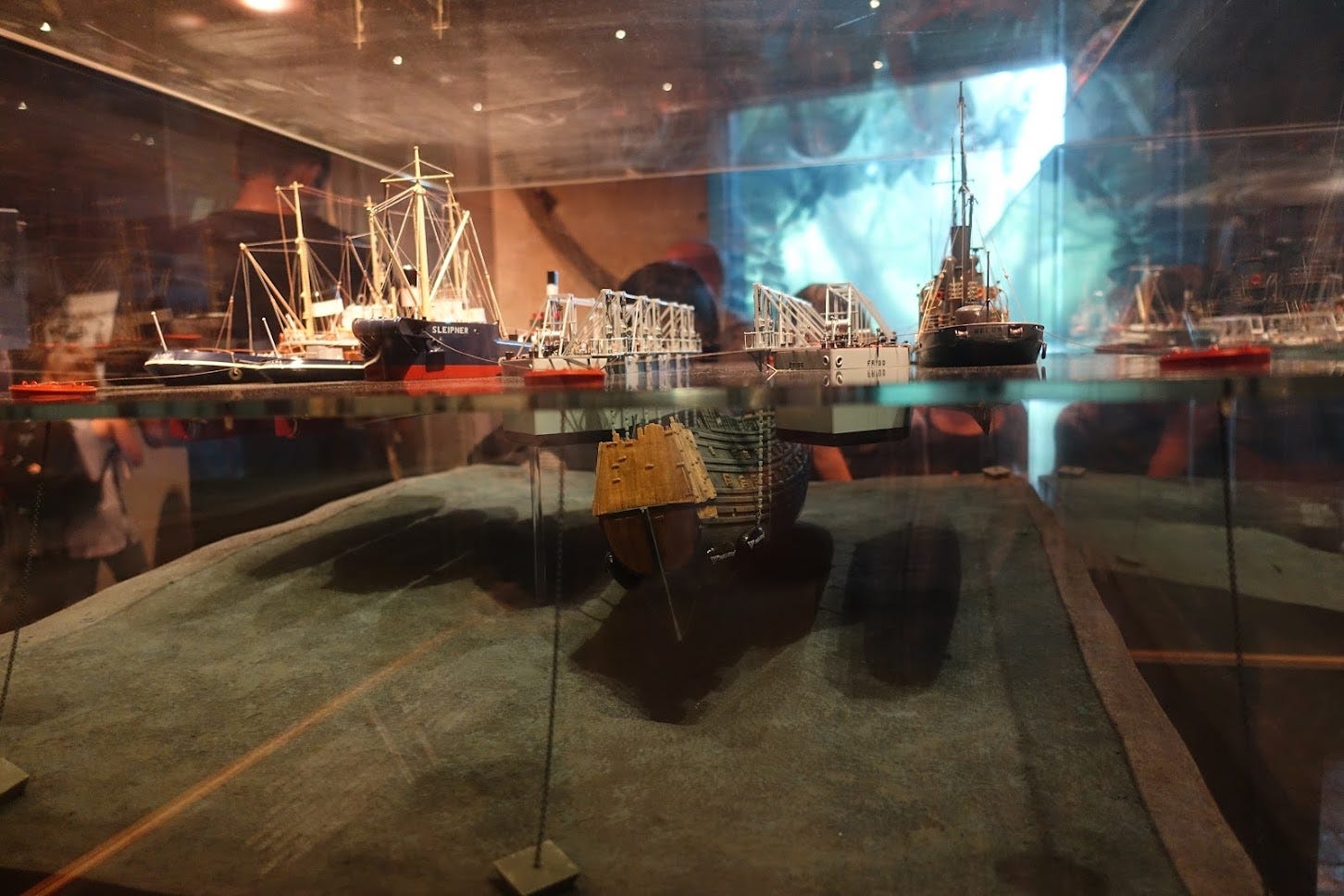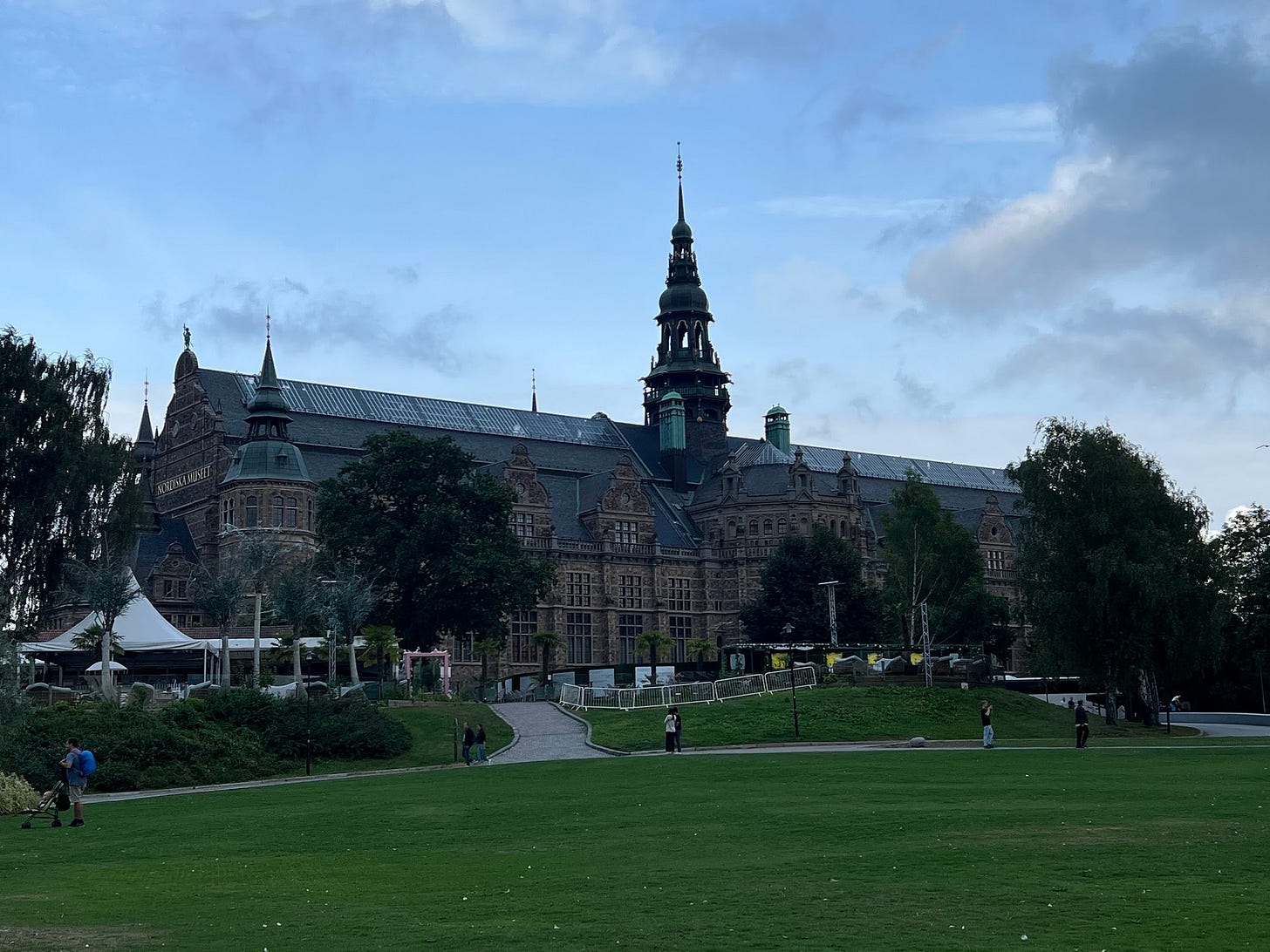Welcome back! Following hot on the heels of Day 0, in which your intrepid travellers made it from Wakefield to Stockholm, we now have out first full day in Sweden’s capital city.
We’d decided to head out for breakfast rather than eat at the hotel. A wander along Klarabergsgaten in the general direction of the city centre and we found the Gallerian shopping centre which handily had a cafe at the entrance. After a brief perusal of the delicious looking cakes, we decided that this was as good a place as any. Ed went for a chocolate cake with cream and I decided that the cinnamon buns had to be tried.
Hoo boy, the Swedes do excellent cinnamon buns. No, there are no photos as I almost inhaled it. So, so good.
Suitably fortified, we set off for our first tourist activity, the Vasamuseet.
When I asked for recommendations for things to do in Stockholm, the one thing that everyone said was “You have to go to the Vasa.”
I had no idea what a Vasa was, or why I’d want to go and see it, but dutifully added it to our list of Things To See in Stockholm.
Reader, everyone was right. If you find yourself in Stockholm, you have to go see the Vasa Museum.
I wondered how long it’d take to look at a big ship, but we bought our tickets (well, Ed paid, good lad) for the Vasamuseet and Vrak, the Museum of Wrecks, and headed inside.
The ship is amazing, and the story equally so. A brief history lesson:
The Vasa was built in 1626 at the request of Gustav II Adolf, the Swedish King. Built by Dutch master shipwright Henrik Hybertsson it was to be the most powerful warship in the Baltic. It launched in 1627. It’s 69 metres long, 50 metres from keel to the top of the mast and weighs about 1200 tonnes. Ten sails, 64(!) cannon and 120 tonnes of ballast.
Told you it was big.
The captain was a bit worried about the ship as it wasn’t very stable. It rolled in port (never a good sign) but the King says just get on with it, so they set off in summer 1628.
And promptly sank less than a kilometre and a half out of port. You see those holes in the side of the ship? They’re the gun ports for the cannons. But they’re also a bit on the low side for a seagoing vessel, especially when the ship is laden with cargo. So they couldn’t put enough ballast in the hold to keep the ship stable without the gun ports going close to the water line. And what you don’t want in a ship is holes close to the water line, because if it rocks from side to side (as ships are wont to do), the water will get in and the ship will sink.
Guess what? The ship hit some rough weather, rolled and lo, water got in.
It sank. Within sight of the harbour. Thirty five years later the cannons are retrieved from the seabed using the newly-invented diving bell. Clever stuff.
The ship is promptly lost for a couple of hundred years, only to be found again in the mid 1950s when a fuel engineer called Anders Franzén stumbles across the Vasa in the harbour. Sweden celebrates, and the Vasa is raised from the seabed some 330 years after it sank. The technical details are incredible - divers dug tunnels under the hull in the mud to pass cables through and free it from the mud.
The Vasa Museum is built around the ship in the harbour, and undergoes 17 years of being sprayed with preservative and being dried ever so, ever so slowly to keep it stable.
It’s incredible. Something like 98% of the original structure survived, including the sails. Stunning. The detail on this is amazing.
You HAVE to go see it in person.
Having spent a good couple of hours learning about the Vasa and its history, we decide it’s time for lunch. The museum cafe looks good, though the menu is in Swedish (imagine that). Ed plumps for some gravlax (smoked salmon) with potatoes, and I decide to try the beef brisket.
I take pity on him and share the delicious beef brisket and potato cake thing. To be fair, his salmon is also delicious and the potatoes in sauce are great too. Result!
Having had our fill of the Vasa, we headed off to Vrak, the Museum of Wrecks.
Vrak is small, especially compared to the Vasamuseet, but well worth a visit. Definitely go for the double ticket if you go. They’ve got some really cool displays including some 3d stuff which is pretty impressive.
Having had our fill of nautical adventures, we said farewell to Vasa and Vrak, and headed off past the Nordiska Museet (no time for a visit, alas) and along the waterfront to Gamla Stan, the old town.
But more of that in the next exciting adventure!












Stockholm! Lesson of the morning is to not delve into travel books while also trying to write blog comments! LOL
Great post! I have been looking forward to reading your adventures in Oslo. That is an impressive ship! The details are fantastic.